Mummers can trace
their roots as far back as ancient Egypt. They're best documented
during the medieval period, where the mummers' play was a popular
pastime for the poor. There's a wide variety of mummer plays, but
mostly they weree characterized by big masks and pantomime
traditions.
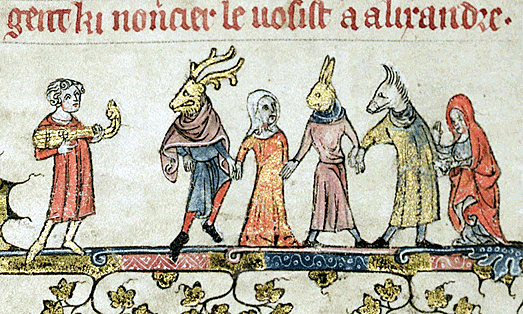
As time went on, the mummers began to beg for food or drink from
those in the area after performing a satirical skit or poem.
Some of the earliest mummers’ plays date back to early Egypt, pagan
Rome and Greece, England, Germany, and France. Historically, mummery
has influenced customs and perpetuated many interesting traditions.
Every nation had its mumming festivals at one time or another, each
marked by parades and displays of fanciful costumes.
Medieval mummers were amateur actors who performed different plays
in the villages at the harvest time or on some religious occasion
such as Christmas. Sometimes, these plays specifically preached
religious teachings but mostly they were just for entertainment.
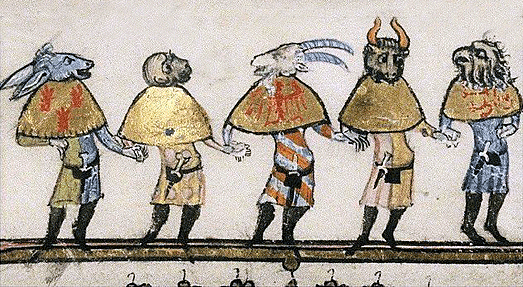
These medieval mummers possessed all the skills required for a sound
medieval entertainer, including acrobatics, singing, mimicry,
pantomime, and other kinds of entertainment. Eventually they formed
into traveling bands of actors with different particpants possessing
specialized acting skills.
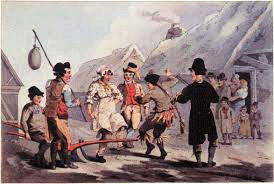 The
repetoire of medieval mummers was varied. One common form was a play
done in disguise which was mainly popular in the English speaking
parts of Europe. This play was a comic performance mainly done is
disguise, although it was common to include various religious
themes. In parts of Britain and Ireland, Plough Plays, performed on
Plough Monday, were also popular. Plays based on stories from the
Bible became popular during the middle and late medieval times. It
was also common to stage plays based on popular legends; One such
legend was “St. George and the Dragon,” and plays based on it became
quite popular.
The
repetoire of medieval mummers was varied. One common form was a play
done in disguise which was mainly popular in the English speaking
parts of Europe. This play was a comic performance mainly done is
disguise, although it was common to include various religious
themes. In parts of Britain and Ireland, Plough Plays, performed on
Plough Monday, were also popular. Plays based on stories from the
Bible became popular during the middle and late medieval times. It
was also common to stage plays based on popular legends; One such
legend was “St. George and the Dragon,” and plays based on it became
quite popular.
Most commonly, medieval mummers performed in open spaces where a
stage could be set up for the performers. Nobles and monarchs held
mummering parties, in which case the plays took place indoors. Among
English monarchs, Henry VII was famous for holding mummering parties
where medieval entertainers enacted plays.
It was common for medieval mummers to wear outrageous costumes
during their performances. For example, men could dress like women
and vice versa. Sometimes, the actors wore costumes resembling
animals. The costumes mainly depended on the kind of play and mostly
featured an element of humor.
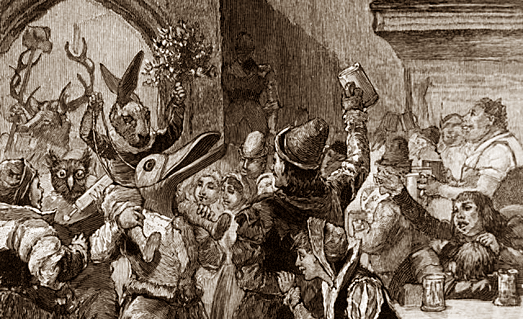
Christmas was a very important time for medieval entertainers, just
like everyone else. Medieval mummers performed various plays on
Christmas Eve with predominantly religious themes. For instance,
various stories from the Bible could be adapted into plays and
performed. In the Christmas season, plays performed during the All
Souls’ Day were called Souling or soul-caking and were quite popular
in medieval Britain.
On June 25, 1861, an "Act to make further provisions for the
prevention of Nuisances" was introduced in response to the death of
Isaac Mercer in Bay Roberts. Mercer had been murdered by a group of
masked mummers on December 28, 1860. The Bill made it illegal to
wear a disguise in public without permission of the local
magistrate. Mummering in rural communities continued despite the
passage of the Bill, although the practice did die out in larger
towns and cities.
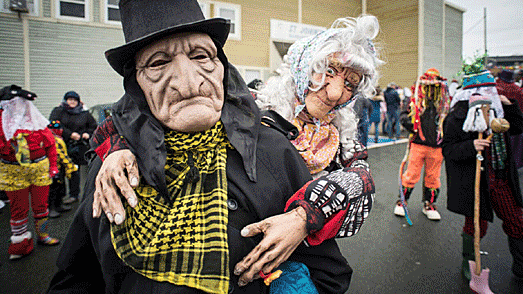
Today, mumming is a Christmas-time house-visiting tradition
practiced in Newfoundland and Labrador in Canada, as well as in
Ireland and parts of the United Kingdom.
An old Christmas custom from England and Ireland, mummering in a
version of its modern form can be traced back to 19th-century
Newfoundland. Although it’s unclear precisely when this tradition
arrived in Newfoundland and whether it was by the English or the
Irish, the earliest record dates back to 1819. Some historians
believe that Irish immigrants brought the tradition to Newfoundland
from County Wexford. The tradition varied, and continues to vary,
from community to community.
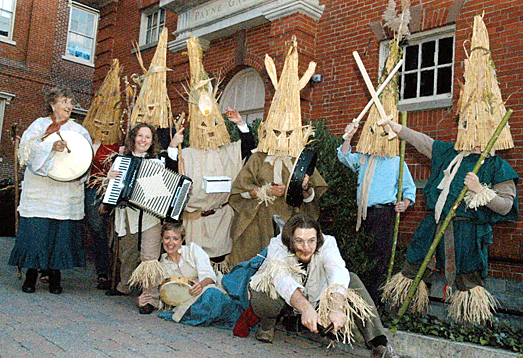
Also known as mumming or janneying, it typically involves a group of
friends or family who dress in disguise and visit homes within their
community or neighboring communities during the twelve days of
Christmas. If the mummers are welcomed into a house, they often do a
variety of informal performances that may include dance, music,
jokes, or recitations. The hosts must guess the mummers' identities
before offering them food or drink. They may poke and prod the
mummers or ask them questions. To make this a challenge for the
hosts, the mummers may stuff their costumes, cross-dress, or speak
while inhaling. Once the mummers have been identified, they remove
their disguises, spend some social time with the hosts, and then
travel as a group to the next home.
